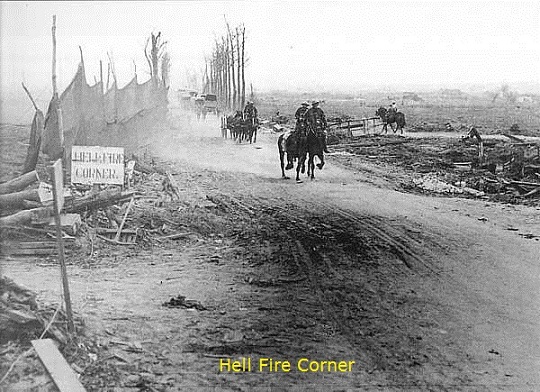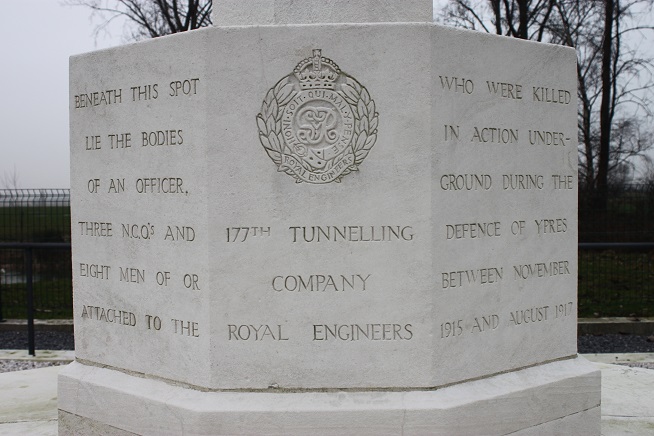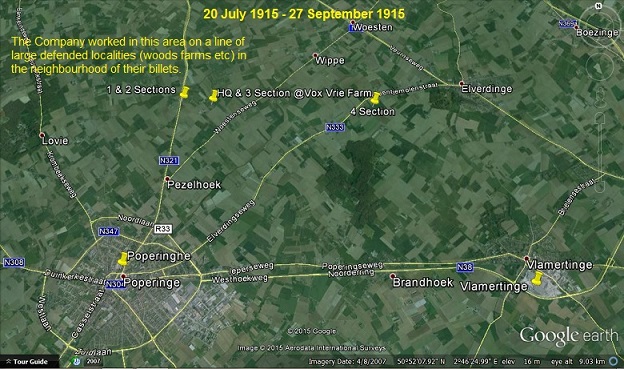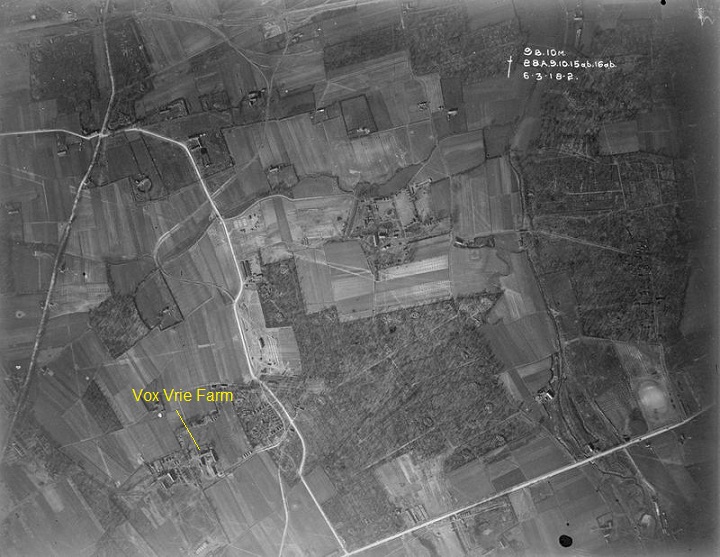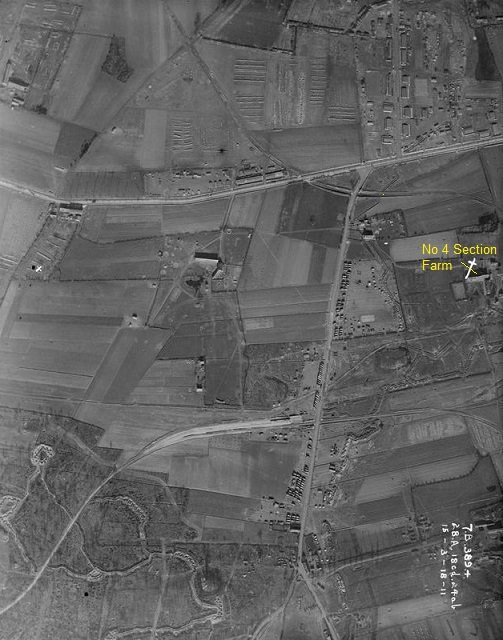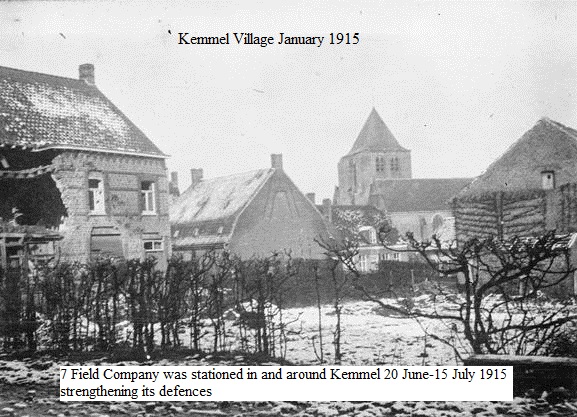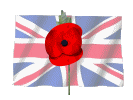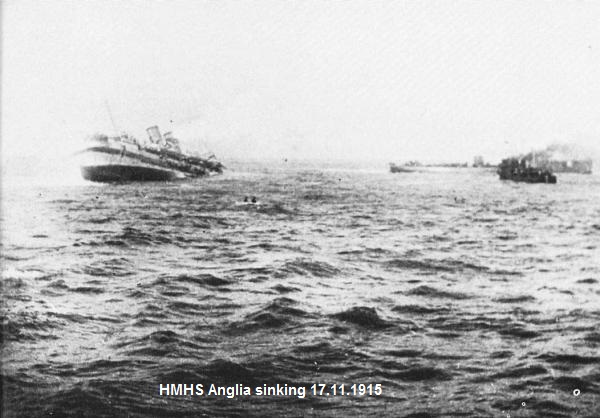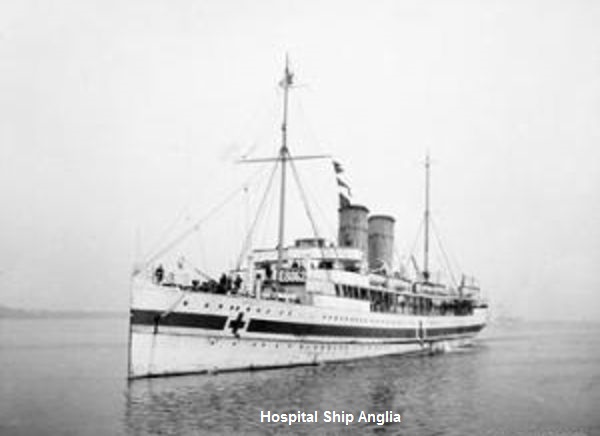The Black Horse Trail - Revisited 1915 - 2015 Page two
Right & below: Hellfire Corner was a junction in the Ypres Salient in WW1. The main supplies for the British Army in this sector passed along the road from Ypres to Menin - the famous Menin Road. A section of the road was where the Sint-Jan - Zillebekke road and the Ypres-Roulers railway line crossed the road. The German Army positions overlooked this spot and their guns were registered upon it so that movement through this junction was perilous, making it the most dangerous place in the sector.7 Coy’s returning stores wagons crossed here every evening (13 December 1915 - 9 March 1916) on their way back to Ypres. Fortunately they all returned unscathed.
The 2nd Bn N.F's main objective was Bellewaarde Farm further up the hill from Witte Poort Farm. On the Bellewaarde ridge close to Bellewaarde Farm is the RE Grave, which stands above entombed tunnellers.
Above and below: The RE Grave, Railway Wood on Bellewaarde Ridge, Ypres
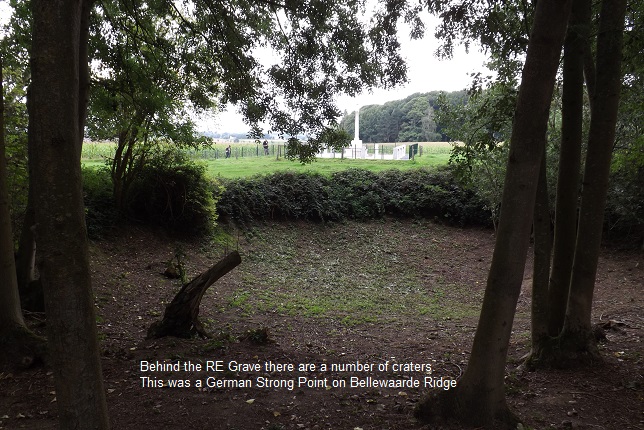
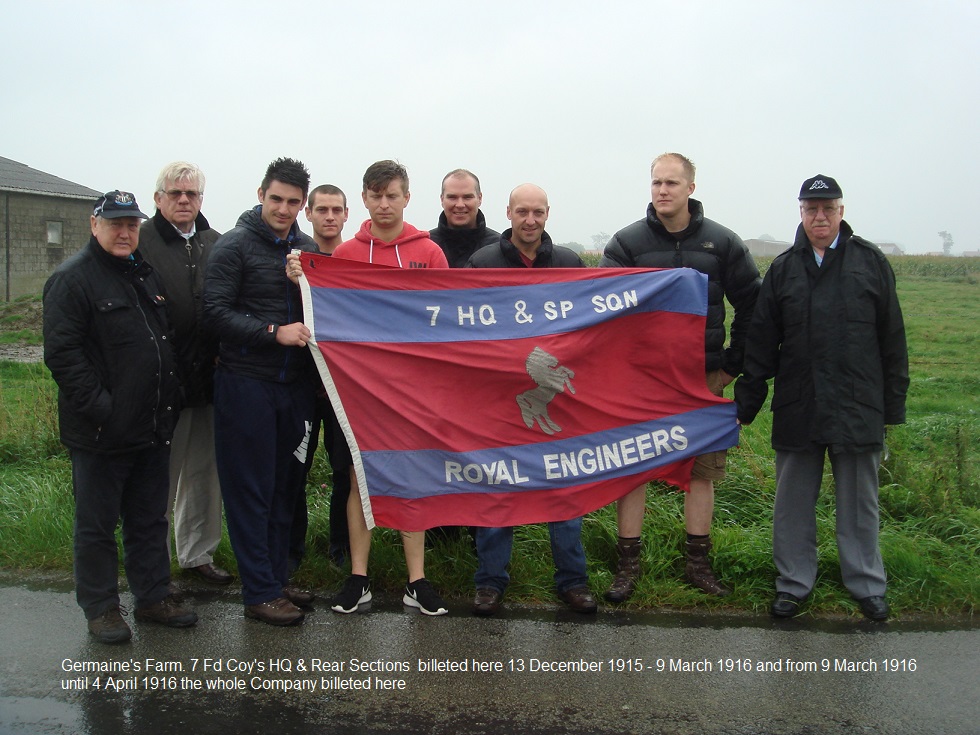
Lt Glubb's Diary entry for the
26 January - 8 February 1916:
With my section, which is resting in the rear billet, near Vlamertinghe. We call it H21 b 2 2 (aitch twenty-one bee two two), which is the map reference. The troops call it Germaine's Farm. Germaine is the buxom eldest daughter of the farmer and his wife, Monsieur and Madame Heuge Jaart. The family allows the troops into their big kitchen every evening, and sells them beer, with Germaine as barmaid. The officers' mess is in the next room. All the evening, we hear the boys playing 'house' - Twenty-four, clickety-click, number eight, thirty-two and so on, until someone yells 'House.'
At other times we are treated to a rousing chorus:
I want to go home! I want to go home!
I don't want to go to the trenches no more,
Where the whizz-bangs and shrapnel they whistle and roar.
Take me over the sea,
Where the Allemans cannot catch me,
Oh my! I don't want to die,
, I want to go home!
followed by loud cheers.
I wonder if the Boche intelligence have received copies of this song, and reported that the morale of the British Army is cracking. I walked about for a few days but my foot opened up again, so I took a week more lying up. After that I rode Minx -she is getting fitter and is very handy and pleasant to ride.
The troops had a concert on the night of 7 February in one of the barns. Several brilliant comedians appeared in No 2 Section. The officers were ushered into the barn, and sat on stiff chairs behind a table with candles stuck in bottles burning on it in front of us, as if we were Roman Catholic saints. Champagne was served to officers. It was a very good show. Perhaps the most applause was earned by a corporal in No 2 Section. Being a regular unit in a territorial division, the company is a bit snobbish. However we live entirely among territorials, so we could not be rude to them. But 'Kitchener's Army ' was a legitimate
butt for our sarcasm.There was a popular song just before the war,called 'The Galloping Major '. The corporal sang a parody of this;
Whenever we go to war,
We drive the enemy barmy,
Hi! Hi!
Never say die!
Here comes Kitchener's Army.

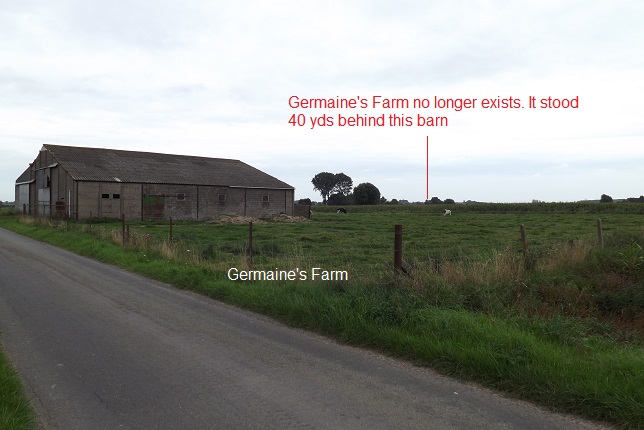
Germaine's Farm. Company billets 13 December 1915-4 April 1916
20 July 1915 - 27 September 1915: On the 19 July the Company was moved at short notice for special duty under the direct command C.E. II Corps fortifying a line of defence. Poperinghe - Elverdinghe
No 4 Section were billeted on this farm and worked on building defences on nieghbouring farms and woods etc.
The work commenced on the 21st on a line of defended localities, woods, farms etc., east of Poperinghe, West Vleteren Road and Elverdinghe, for which purpose two entrenching battalions were affiliated. The work continued until the 27 September and included the construction of numerous concrete machine gun emplacements and many wells. The peaceful interlude of two months was refreshing for the officers and men after a year of continuous service in “The Line”
Casualties during this period:
8 July 1915 Spr C. Randall wounded
18 August 1915 Spr R. Cults wounded
9 September 1915 Lcpl A Davidson wounded
The Company war diary entry 1-7 September 1915:
Work on the four strong points continued as last month.
GOC 2nd Army inspected the works
Nos 1 & 2 Sections were billeted at this farm
Above & Right: 7 Coy billeted and worked in these areas with two entrenching battalions under command
The group stopped in Poperinghe for lunch and visited the Town Hall
where Allied soldiers were executed by firing squad WW1.
Poperinghe was a relatively safe place and the British army used it for billeting, rest and hospitals.
There are two cells and the courtyard preserved at the town hall
The courtyard
Kemmel 21 June - 16 July 1915
17 June 1915.The Company joined the 151st Bde at Dranoutre where it billeted.
21 June 1915. Recces were made of the trenches at Wyschaete which were to be taken over by the 151st Bde.
Here, the Company’s Sections worked in and around Kemmel village strengthening its defences, and the farms between it and the trenches, rewiring knife rests, building concrete gun emplacements in cellars, making timber frames for dugouts, supervising large infantry works parties making support trenches, flooring and improving existing trenches. Some sappers were employed in the trenches.
On the 26 June the Company moved into scattered billets in Kemmel. On the 15th July the Company handed the trenches to the 38th Field Coy RE The weather was fine and there were no casualties
Hill 60
The group visited Hill 60 a much fought over position, which 7 Coy worked very close to in 1915-1916. It has been preserved and is a memorial to those who fought and died there
The inscription on the plaque reads:
In Memoriam of Officers and Men of the 1st Australian Tunneling Coy who gave their lives in the mining and defensive operations of Hill 60 1915-1918
This monument replaces that originally erected in April 1919 by their comrades in arms.
1923
On the plaque you can see the bullet hole where the Germans shot at it in WW2
Menin Gate, Ypres
16 September 2015
The Black Horse Trail attended the 'Last Post' Ceremony in remembrance of Spr Matthews E.C. who is commemorated at Menin Gate along with over 54,000 others with no known graves.
Standing under the Panel of the Royal Engineers
For information on the Ypres Last Post Ceremony click on the link
http://www.greatwar.co.uk/events/menin-gate-last-post-ceremony.htm
The Black Horse Trail 2015 also visited two, World War Two sites of the Shiny 7th
Hear them play The Last Post
The Last Post Ceremony Menin Gate 16 September 2015
Battle of the Ypres-Comines Canal 27-28 May 1940
On my recces prior to the Black Horse Trail 2015 I visited Ridge Wood Military cemetery to plant poppy crosses on the graves of four of our fallen forebears who were killed in 1916.
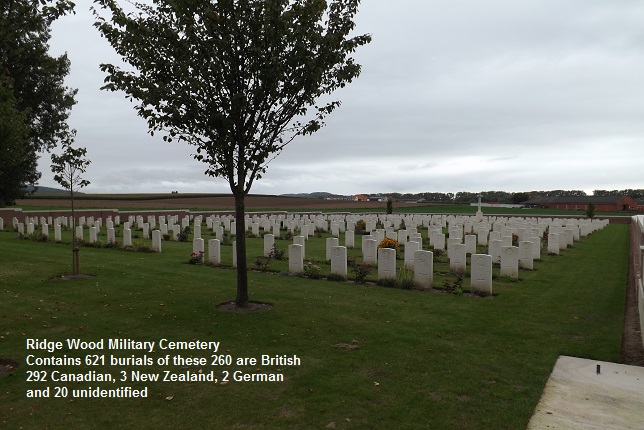
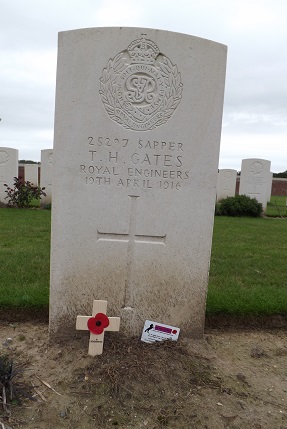
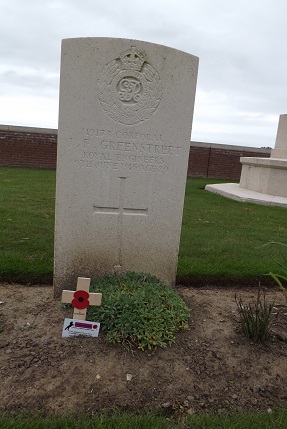
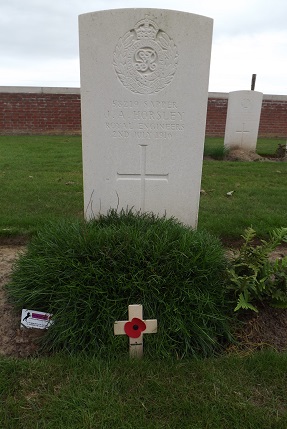
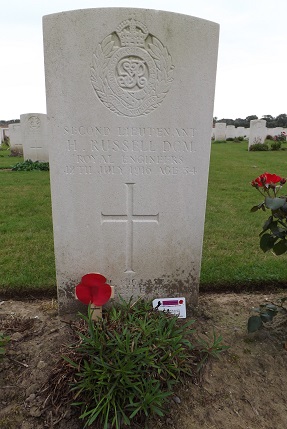
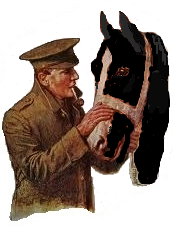
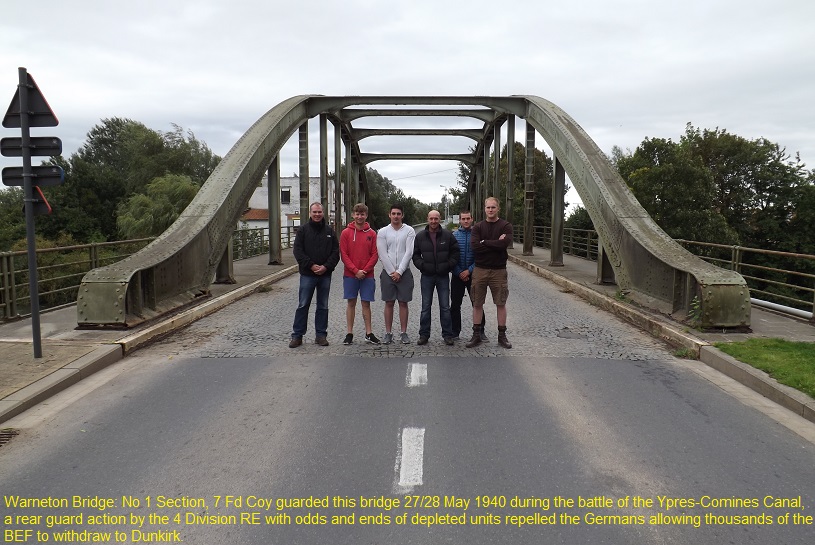

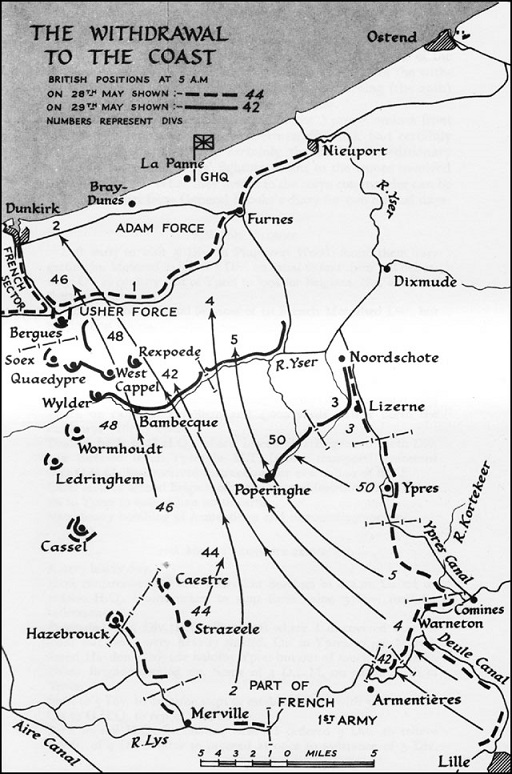
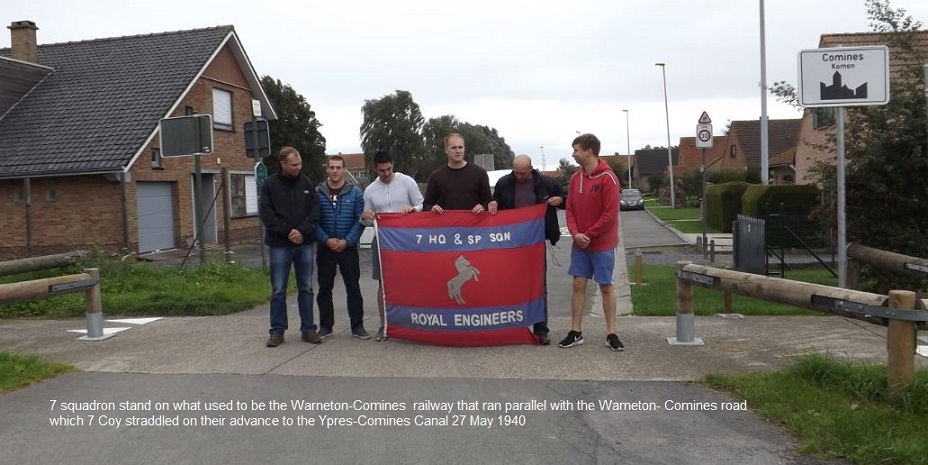
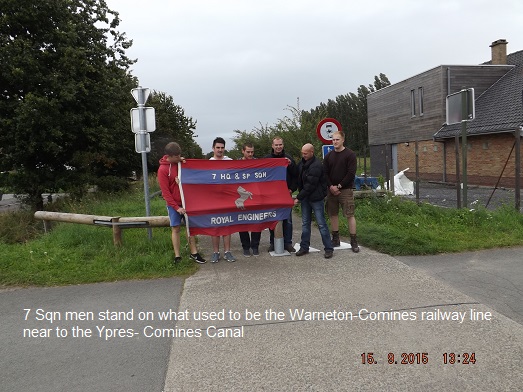
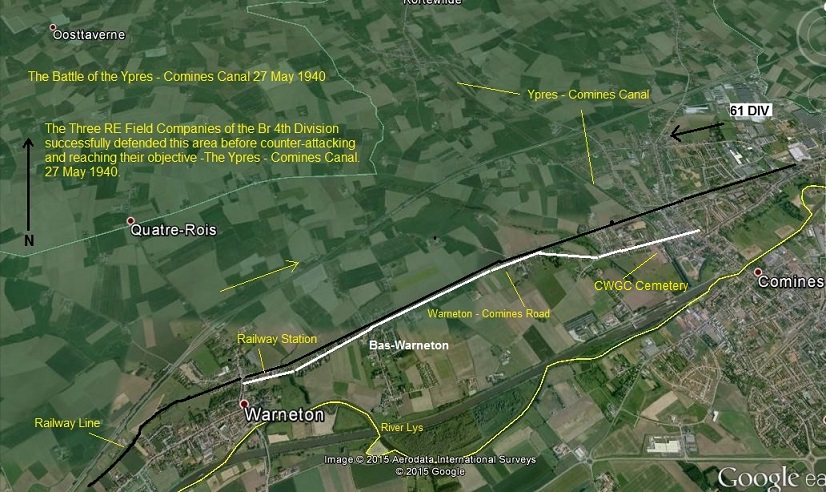
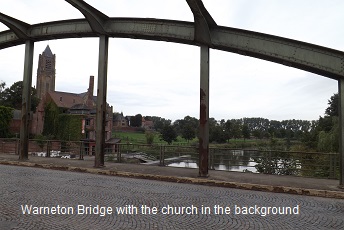
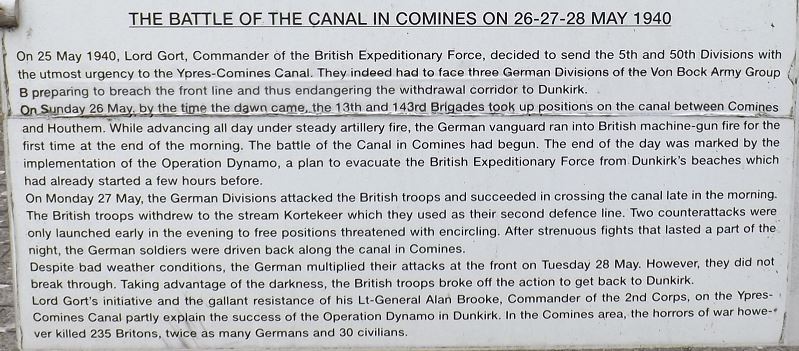
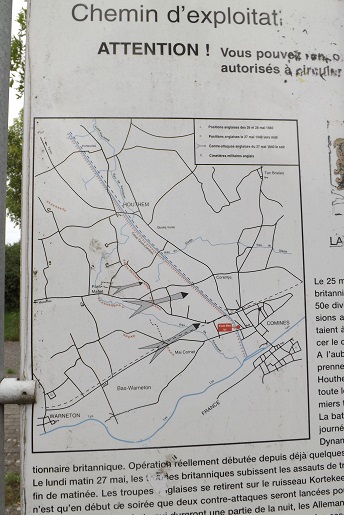
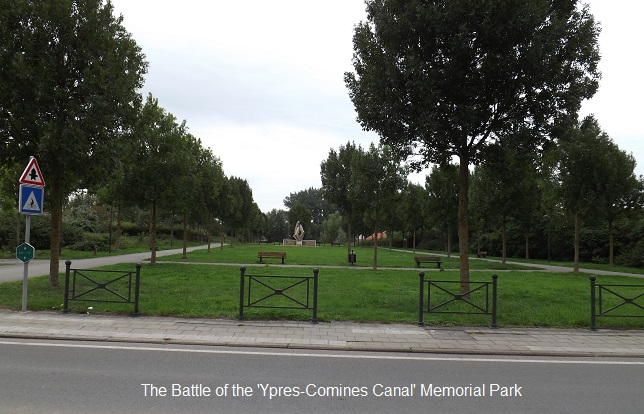
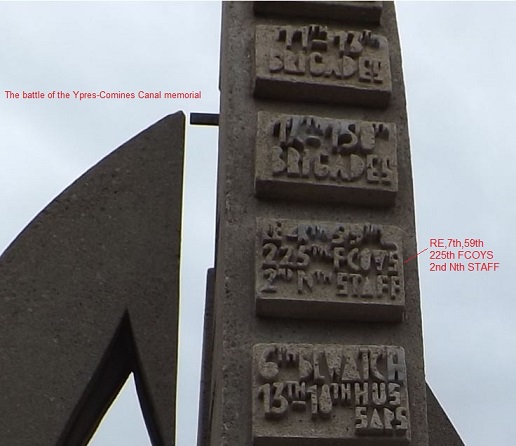
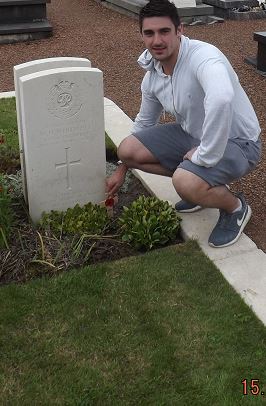
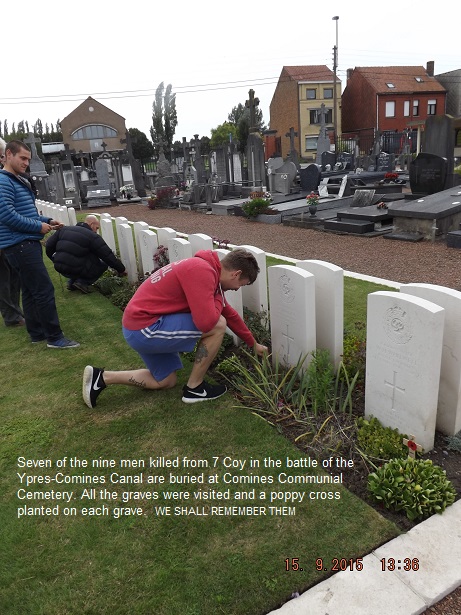
Battle of The Ypres-Comines Canal May 1940
27th May 1940
The German attack started early in the north of 143 Bge’s area, against the 1st Coy 7th Royal Warwickshire Regiment. Shelling began about 07:00 hrs.
By 09:00 hrs, we had had breakfast and the OC Maj Gillespie was in conference with Capt Hodgson from HQRE. 225 Coy, who were on the bridge at Comines were ordered to hold the bridge until 11:00 hrs, then withdraw to Warneton. they held the bridge until relieved at 12:00 hrs almost being surrounded by the enemy.
At the conference, the OC was instructed to take command of of 4 Div Engineers, by this time, 59, who had been preparing defensive positions on the river bank,to deny enemy crossing points, had also been withdrawn into Warneton.
It was now clear that all was not well in the east, as infantry from the forward edge of 143 Bge’s area were withdrawing from the line, into Warneton.
By now troops from 4 Div were withdrawing from the south, as the order for the evacuation had been given the night before and “Operation Dynamo” had been put into place, so we were now operating in 5 Div’s area. Also in Warneton were, 97 Kent Yeomanry Artillery Regt, A,B and C Sqn 13th/18th Hussars in their Cruiser light tanks, the CO of 6th Bn Black Watch, with his HQ Coy, a depleted platoon of 9 with 1 Bren Carrier and by now stragglers of the 1st Ox and Bucks and 8th Bn Royal Warwickshire Regt.
By mid afternoon, the 8th Warwicks and 1st Ox and Bucks had pulled back about a mile to a mile and a half from their respective front line positions on the Ypres-Comines railway line, having been pushed back by enemy infiltration. At this time it was estimated that these front line troops had been reduced to 50-60% strength, having been fighting a retreating battle from the north east, as we had also been doing, for the previous 10 days.
The CO Black Watch had been itching to put in a counter attack into Comines, as the bridge, at Warneton was now of the utmost importance to both sides, for obvious reasons, one for escape to the coast, the other to cut off our withdrawal.
As we were in 5 Div’s area, the decision had to come from their commander, Gen Franklin, he wasn’t too sure about this, as the criteria for the counter attack didn’t meet the standard. There had been no reconnaissance, he didn’t know the strength or composition of the counterattack force and there was no intelligence about the enemy positions or strength, no communications between troops and the attack would be in daylight, and likely to finish in darkness, plus we were 4 Div troops, not under his direct command, so basically said, if they want to why not let them.
The plan was made, 7 Coy with the Black Watch and remnants of Ox and Bucks Warwicks, would take the lead, behind and to the left of them some 300yds would be 59 and some 300yds behind them to their left would be 225, in echelon. Dispersed between 7 and 59, would be C Sqn13th/18th Hussars, dismounted as infantry. The south flank would have A Sqn and the north flank covered by B Sqn. The attack would start at 18:00 hrs.
By this time 97th Kent Yeomanry had set up west of Warneton,but had placed a light field gun on the Warneton Comines road, this it is said was to be used should more troops decide to pull out of the line.
The area of advance was overlooked by an Observation Balloon some way off to the north east and had a commanding view of the area and was able to direct enemy fire with great accuracy, yet was not taken out.
Troops were informed of the plan and start time of 18:00hrs. Spr’s Riley and Lamb, in an OP 200yds down the road on the railway embankment, were informed by Sgt Cutler, but he had to shout to them as he had got himself tangled in telephone wires on the way and had to extradite himself, much to the amusement of 2 section on that side of the road. 3 section was on the right of the road and 1 and HQ sections on their right, with the Black Watch.
Spr’s Daly and Peplow were on demolition guard in on the Warneton bridge, with two French soldier, who when the bridge came under MG fire, from Comines kept their heads down and refused to come out.
The afternoon was spent foraging food and preparing a meal, issuing of ammunition, at least one bandolier per man, each bandolier holding 50 rounds, as well as the two ammunition pouches, filling water bottles, cleaning and checking weapons. A 4 man section had the Bren Gun and the Boyes A/T Gun, which had lost it’s bolt, but was taken anyway!!! Grenades were not issued to the Engineers.
While this attack was being readied, Gen Franklin decided that 5 Div would also put in a counter attack, using the 3rd Grenadiers, 2nd North Staff and 2nd Sherwood Foresters, who had earlier been ordered to pull back to Dunkirk, but had the order rescinded. This attack, unknow to us, would go into the left of ours and 2 hours later to relieve the pressure on 1/7th Warwicks.
So the scene was set, at 18:00 hrs, feeling very exposed, sections left their trenches and “Advanced to Contact” The day had been bright and sunny, sunset was due at 21:41 hrs, so yes the sun was in the enemy’s eyes, but we were then silhouetted. We moved forward at a steady pace. 97 Kent Yeomanry Regt Artillery were providing support by shelling known enemy positions and a creeping barrage. This attack was observed by three Battalions to our left rear.
The main party walked forward, scanning the flat open ground, there was no cover, the odd clump of bushes, weeds and nettles, advancing a good mile and a half, relieving two sections of the OX and Bucks at Mai Cornet. Continuing on, when the lead subsection of 3 section came under concerted fire from a farm about 300yds from a copse. This copse surrounded a pond, (probably a shell/mine crater from WW1.) The rest of 3 section reached the pond and skirted to the right and closed in on 1 subsection, who were engaging the enemy MG in all firing positions.
The section was now bunched , moving into and through the MG’s beaten zone, with spurts of dust and dirt kicking up here and there. 1 subsection concentrated their fire on a window of the farm and silenced one of the MG’s. It was probably roundabout this time that Maj Mc Donald, OC 59 was killed by a mortar hit, as he was cycling in and out of his advancing Company.
It was also about this time that the other counter attack went in to our north and behind us, in the 8th Warwicks area, by this time B Sqn 13th/18th had advanced well ahead on the left flank taking out enemy positions on the far railway line/canal line and setting fire to farms and barns, but taking severe casualties.
The enemy in the farm ahead of 3 section, decided to evacuate the farm under a “White Flag” 2nd Lt Harding gave the order to cease fire, which stopped. The enemy evacuated and then at a prearranged signal, went to ground and opened fire with all their weapons. Lt Harding, Cpl Trice, Lcpl Bonner and Spr’s Black, Borthwick, Founde, Hoodless, Vollans and Whitwell were killed. Spr Baker is reported to have shot a sniper out of a tree.
The use of the”White Flag” is a now well known “Ruse La Guerre” anything to gain an advantage.
Although he had been wounded in the foot, CQMS Fryer, HQ section continued to support the attack with a Bren Gun.
About 21:00, 59 came up in perfect line to our left, unfortunately, Maj McDonald, had been fatally wounded in the advance
By about 21:30 hrs, 1 section moved into a large building near Comines on the right of the road, they could see farms and buildings on fire, they could also see the burning tanks of B Sqn, the firefight was was still ferocious, with tracer streaming in all directions. Although Maj Gillespie was wounded in our advance, he remained in action until 7 were relieved.It was now a matter of holding and consolidating the positions we had reach, some further than others and as far advanced as a ditch, 50-80 yds short of the canal.
A Sqn 13th/18th had pushed on and had crossed the Kortekeer and pushed round between the river and the canal and putting down fire on enemy positions, to force them back beyond the railway line, while this was going on the other counter attack was well advanced and was a bloody hand to hand affair with the Guards taking many casualties.
We held our line, here and there in pairs and small groups until we were ordered to withdraw around midnight and from then to about 05:00 we made our way back to the M T. Spr Rayner, being slightly deaf, didn’t hear the order to withdraw and remained, linking up with the Grenadiers, until they returned to the UK. Spr’s Daly (him of the Warneton Bridge) and Tich Parry had carried a wounded Gd’sman back to Warneton. Spr’s Riley and Lamb, of the OP, had followed the road into Comines, out of the sight of their subsection, they reached Comines, leaving about midnight, having seen no one, returning to their original position of the OP.
The Corps history gives a short account of the attack, it was probably unique in the Corps history, as it was the first time a Division of Engineers had been used in and taken the lead as infantry in a counterattack.
There is always a price to pay, apart from those already mentioned, a further four were wounded. As a result of this action, immediate awards were made at La Panne on the evening of 30th May by the Divisional Commander
CRE Lt Col Coxwell-Rogers, DSO
Maj’s MacDonald and Gillespie, MC’s
Sgt Cutler and L/Sgt AV Vollans MM’s
This counter attack became known as “The Battle of the Ypres-Comines Canal”
On the 29th May 1940, at the conclusion of the battle, Maj Gen Franklin issued a congratulatory order.
“The Commander of II Corps has asked me to convey his warmest congratulations, and the thanks of the 5th Division, and to the attached troops who fought so gallantly on May 27th and May 28th. It is his opinion that it was entirely due to our action that the whole of the Corps was able to effect a withdrawal, and that, unless we had held the Ypres-Comines Canal successfully, the safety of the whole BEF might have been put in serious danger. He emphasized his complete confidence that this fact will be confirmed by history. I am proud to have had under my command such a splendid body of troops. I offer my most sincere congratulations”
In the Field(Signed)
29th May 1940Maj Gen
Commander 5th Division

Grave of
Spr Whitwell W.H
Spr Hoodles J.E
The Pillboxes built by 7 Field Company RE at Le Purgatoire between 7 December 1939 and May 1940 still stand today and were visited by the tour group
Pillbox D with bullet marks above the entrance
It was interesting and a great pleasure to visit the areas where our forebears worked, rested and fought in 1915 together with some areas of WW2, where they fought close to their WW1 battlefield sites. The interest shown by the 7 Squadron men was good to see and the experience can only enhance their military prowess and inspire them in future projects.
The Committee of the battle of the Ypres - Comines Canal held a 75th anniversary commemoration parade 23 May 2015
https://www.youtube.com/watch?v=sf4MC_7v-Gk
Spr Gates T.H. 19-4-1916. R.I.P.
A/Cpl Greenstreet. J.F. 9-6-1916. R.I.P.
Spr Horseley J.A. 2-7-1916 R.I.P.
2nd Lt Russell H. 12-7-1916. R.I.P.
Sappers G.W.Pain & A.Goodall remembered
The graves of the above are in the UK and were visited on the 25 November 2015, the centenary year of their deaths. Poppy crosses were planted and the Ode of rhe fallen read by their graves. 16 of the 17, men of 7 Fd Coy killed in 1915 have had their graves visited this centenary year. The grave that hasn't been visited is Spr Arthur Jamieson who died on 15.11.1915 and is buried at Le Harve.
November 2015
Hospital Ship Anglia
On 17 November 1915 HS Anglia was returning from Calais to Dover, carrying 390 injured officers and soldiers. At around 12:30 pm, 1 nautical mile (1.9 km) east of Folkestone Gate, HMHS Anglia struck a mine and sank in fifteen minutes. The nearby torpedo gunboat HMS Hazard helped evacuate the passengers and crew. Despite the assistance of the nearby collier Lusitania 134 people were killed in the sinking. In October 2014, there were calls for the wreck of the ship to be designated a war grave and protected under the Protection of Military Remains Act, 1986.
Spr G.W.Pain reported sick on the 9.11.1915 and was casavaced back to UK. The hospital ship he was on was sunk by a mine and he died at sea. He is honoured on the wall panel at Hollybrook Memorial, Southampton.
See below
Spr Goodall died of wounds sustained in the shelling of the Ecole Nationale Professionnelle d'Armentieres 12/13 November1915


